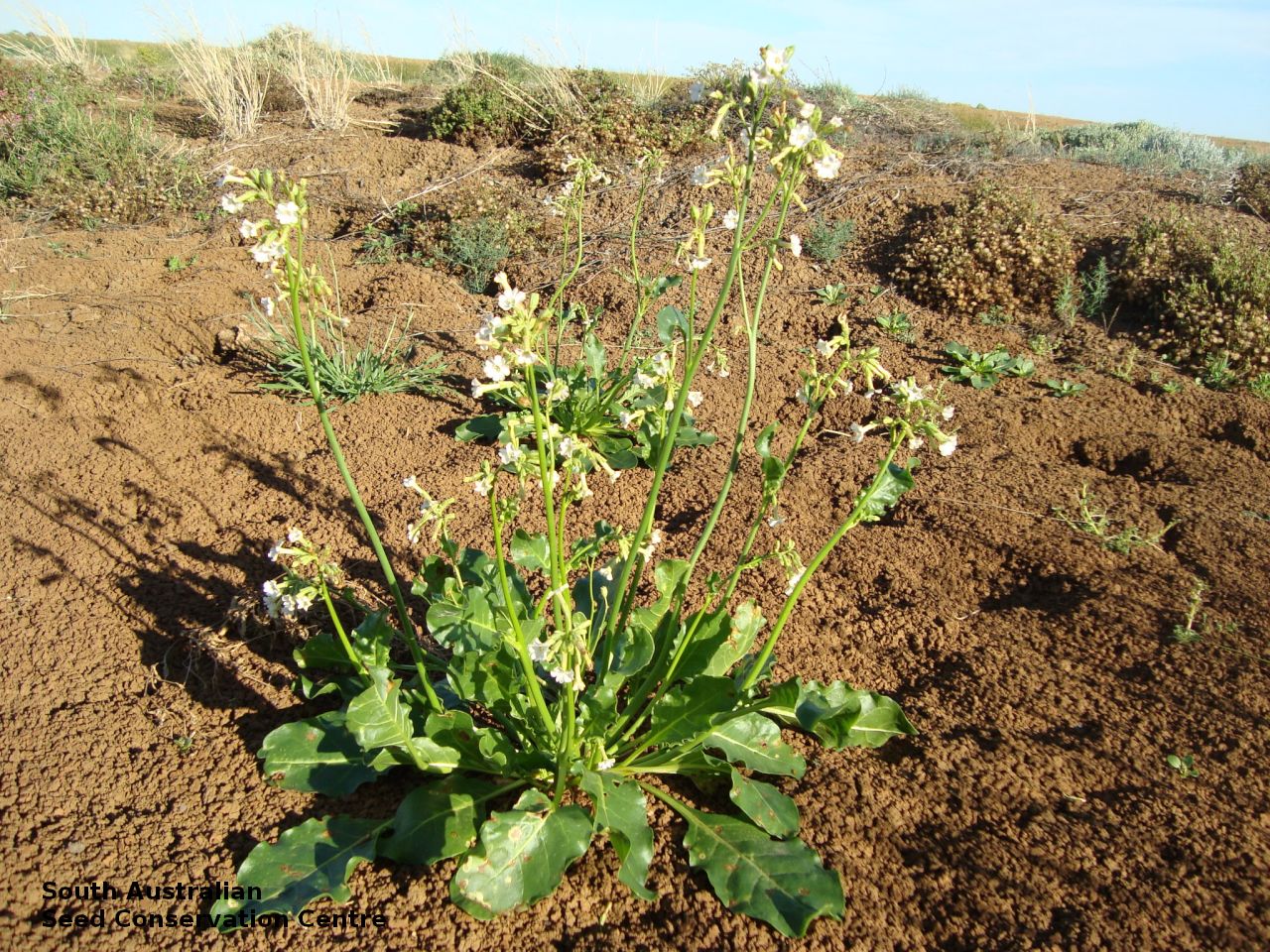
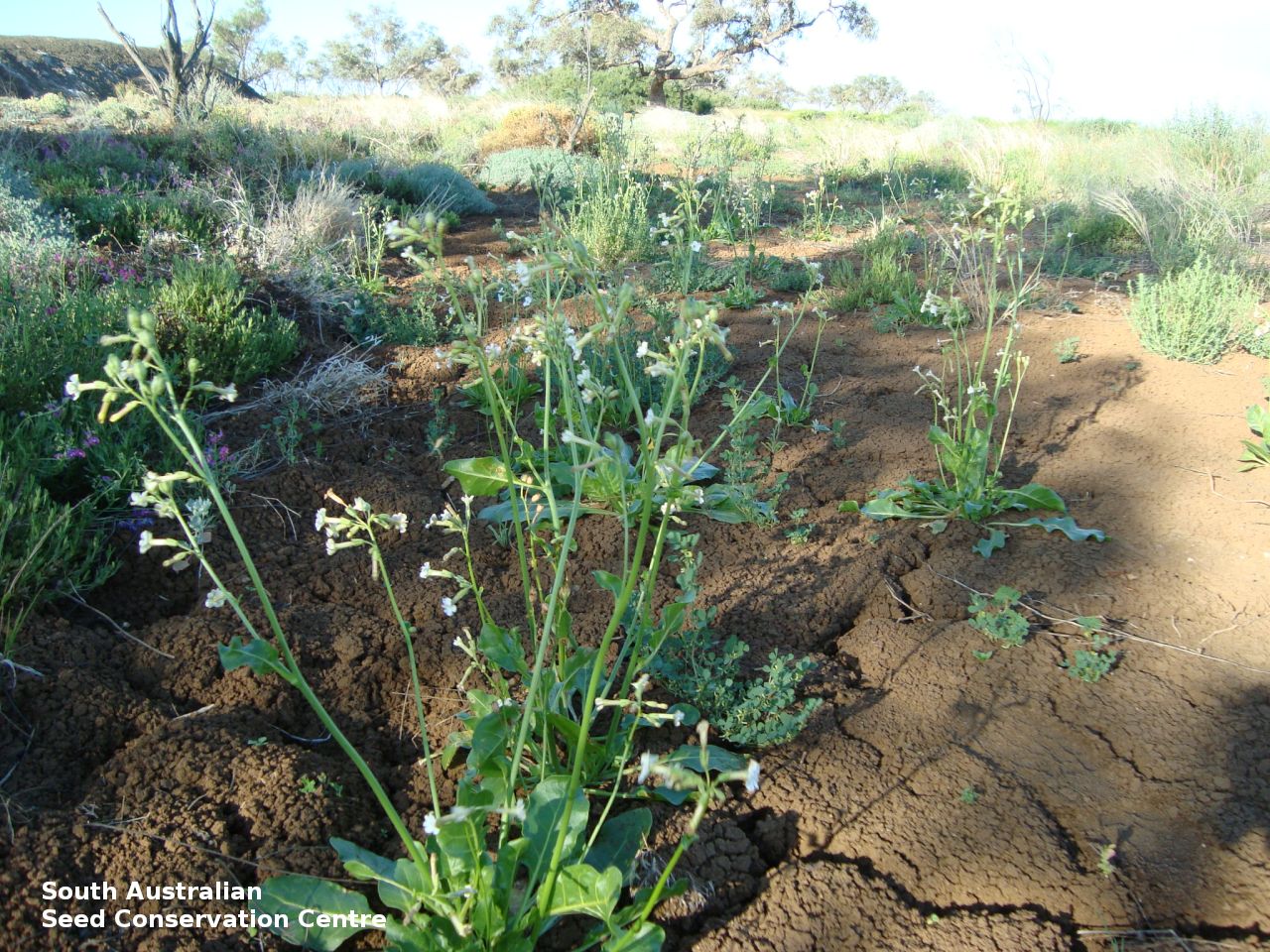
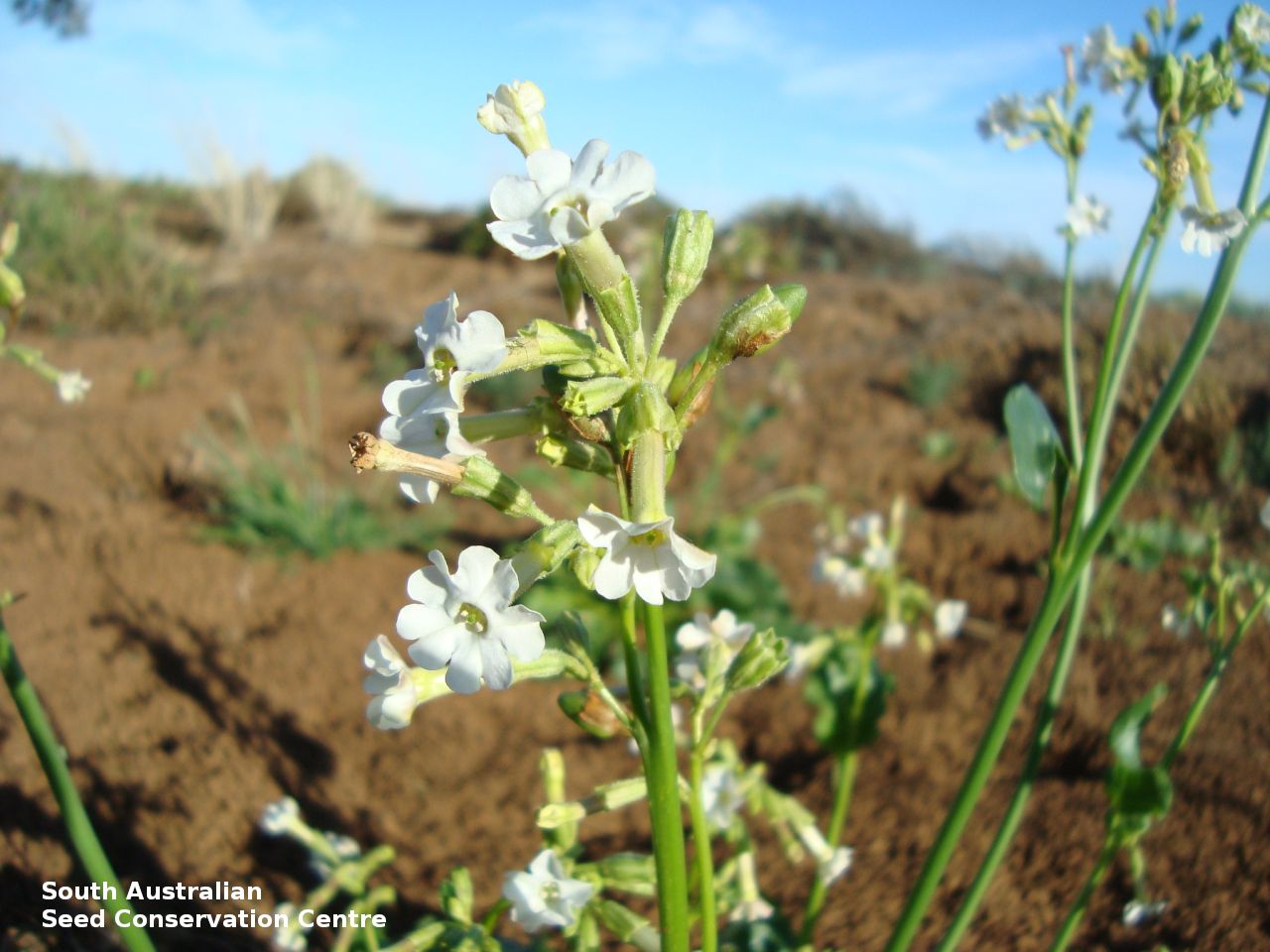
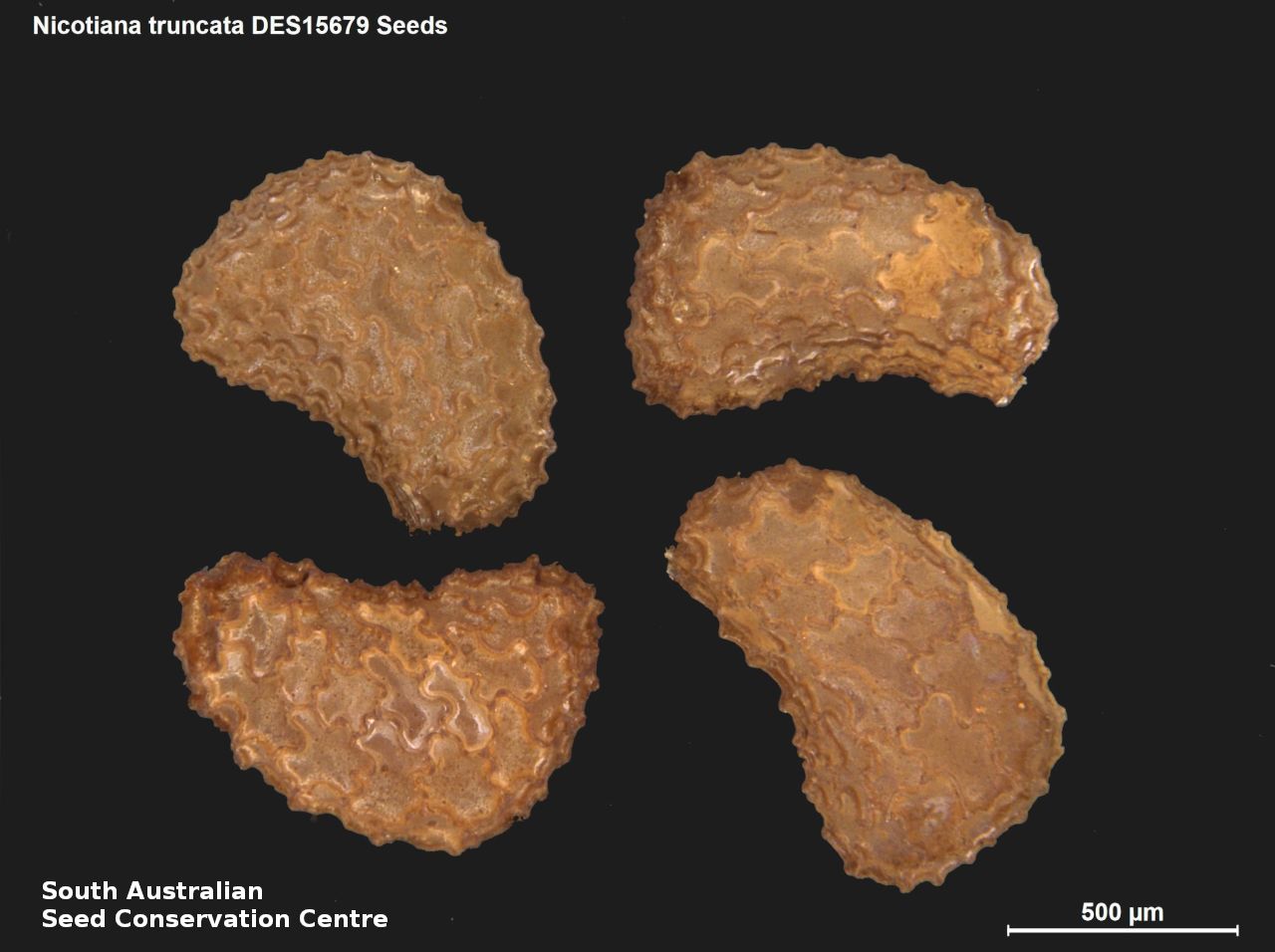
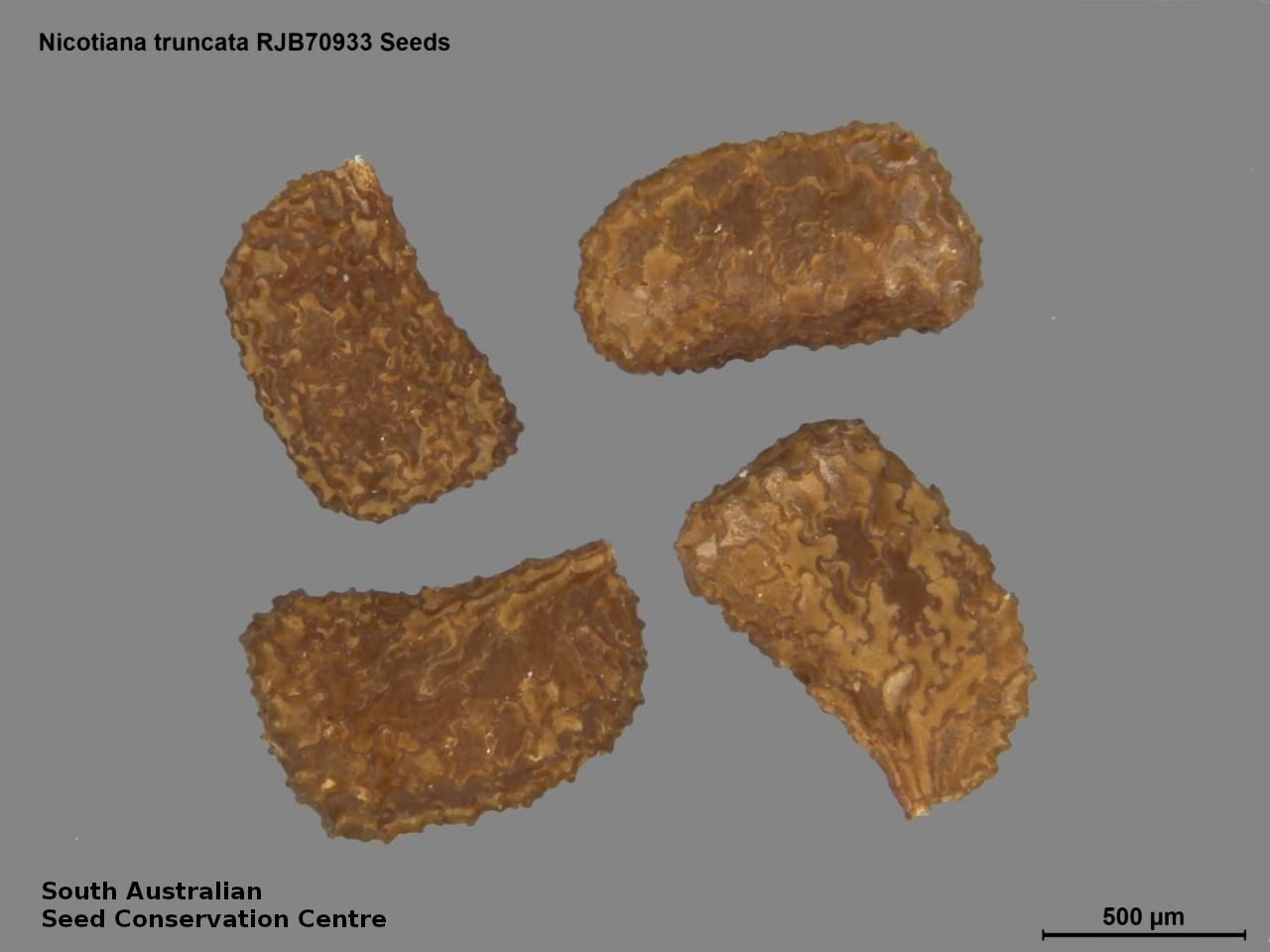
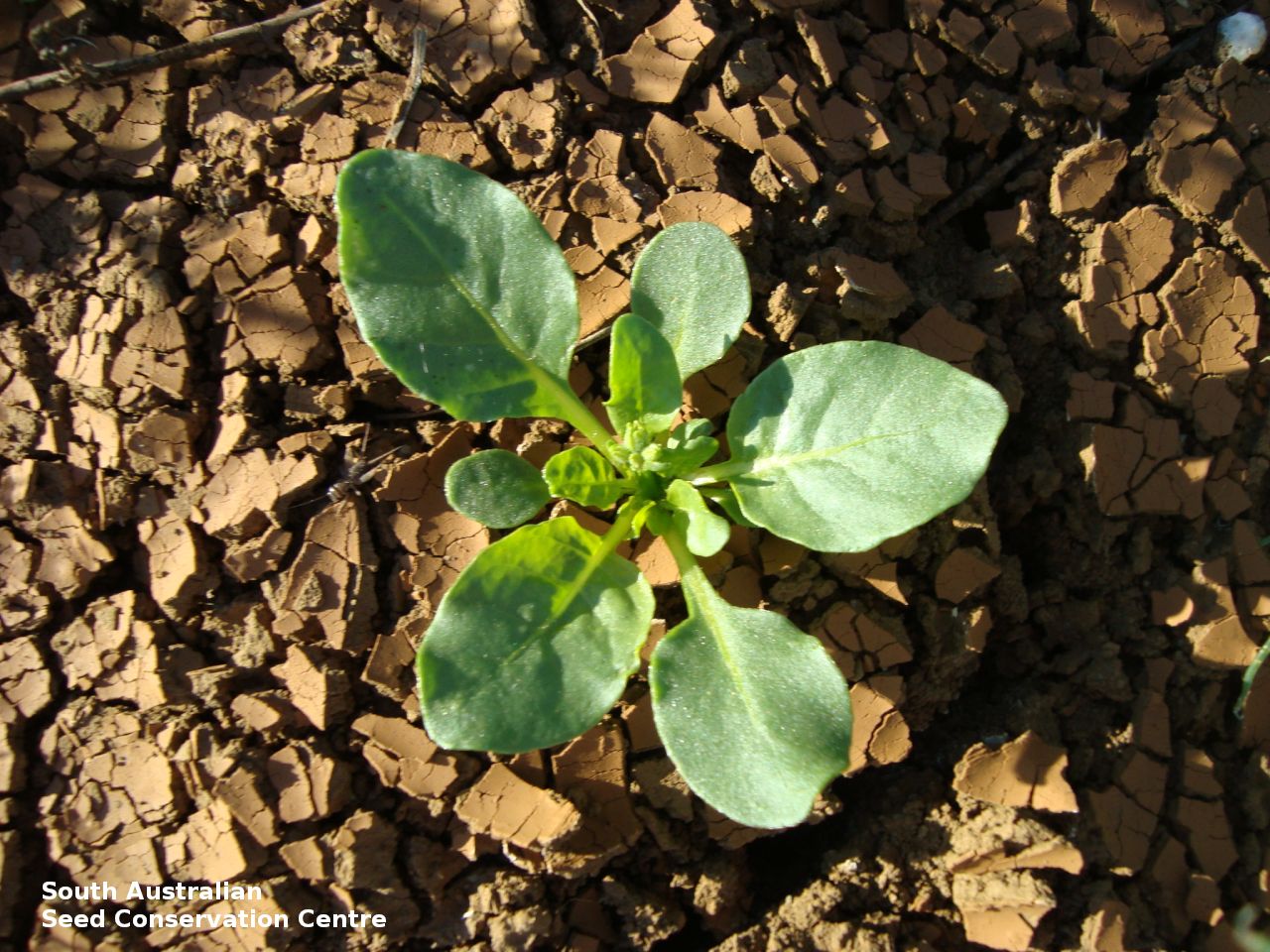


Common names
Moon Plains Tobacco
Etymology
Nicotiana, named after Jean Nicot (1530-1600), a French Ambassador for the King of France to Lisbon in 1560, who sent the first tobacco plant to France. Truncata, from the Latin 'truncatus', meaning ending abruptly as if cut across, referring to the distinctive truncate calyx tube.
Distribution and status
Endemic to South Australia and found between Coober Pedy and Oodnadatta, growing in saline gyseous soil along creeklines. Native. Rare in South Australia.
Herbarium region: Lake Eyre
AVH map: SA distribution map (external link)
Plant description
Seed collection and propagation
Collect seeds between January and December. Collect mature capsules that are brown or turning a pale straw-colour and contain brown seeds. Can collect individual capsules or break off the whole fruit spike. Place the capsules in a tray and leave to dry for one to two weeks, then rub the capsules gently by hand to dislodge the seeds. Use a sieve to separate the unwanted material. Store the seeds with a desiccant such as dried silica beads or dry rice, in an air tight container in a cool and dry place. From two collections, the seed viability was high, ranging from 90% to 100%.
| Location | No. of seeds (weight grams) | Number of plants | Date collected | Collection number Collection location | Date stored | % Viability | Storage temperature |
|---|---|---|---|---|---|---|---|
| BGA MSB | 16,000 (1.1 g) 16,000 (1.1 g) | 50 | 13-Mar-2007 | RJB70933 Gairdner-Torrens | 1-Aug-2007 | 90% | +5°C, -18°C |
| BGA | 77,000 (10.98 g) | 25+ | 7-Oct-2010 | TST1056 Lake Eyre | 1-Jan-2012 | 100% | +5°C, -18°C |
Number of plants: This is the number of plants from which the seeds were collected.
Collection location: The Herbarium of South Australia's region name.
% Viability: Percentage of filled healthy seeds determined by a cut test or x-ray.